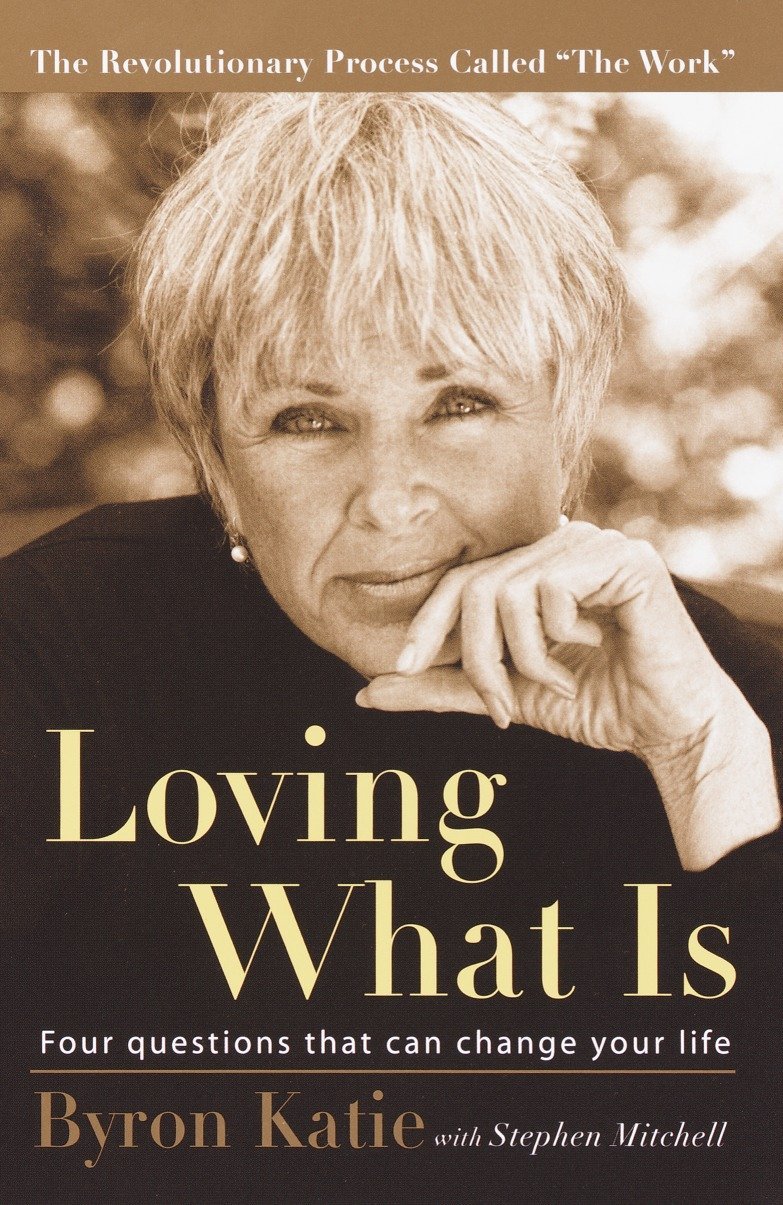Loving What Is

“We are disturbed not by what happens to us, but by our thoughts about what happens.”
— Epictetus
“Loving What Is” gives you four simple questions to turn negative thoughts around, change how you react to the events and people that stress you and thus end your own suffering to love reality as it is.
Notice when your thoughts argue with reality
Suffering is a natural alarm, warning us that we’re attaching to a thought; when we don’t listen, we come to accept this suffering as an inevitable part of life. It’s not.
The only time we suffer is when we believe a thought that argues with what is. Wanting reality to be different than it is is hopeless.
Stay in your own business
There are only three kinds of business in the universe: mine, yours and God’s (or the reality/nature).
Much of our stress comes from mentally living out of our own business.
If you are living your life and I’m mentally living your life, who is here living mine?
Meeting your thoughts with understanding
A thought is harmless unless we believe it. It’s not our thoughts, but the attachment to our thoughts, that causes suffering.
Become aware of your stories
A story may be about the past, the present or the future; it may be about what things should be, what they could be, or why they are. Stories are the untested, uninvestigated theories that tell us what all these things mean. We don’t even realize that they’re just theories.
Inquire
To inquire or to investigate is to put a thought or a story up against the four questions and turnaround. It’s a way to end confusion and to experience internal peace, even in a world of apparent chaos.
The four questions
We have a 20/20 vision about other people, but not about ourselves. Eventually you come to see that everything outside you is a reflection of your own thinking. You are the storyteller, the projector of all stories, and the world is the projected image of your thoughts.
You can overcome stress by dissecting your thoughts with four simple questions.
1. Is it true?
Sometimes it’s immediately evident that a statement is simply not true.
As a first step, we should investigate the following:
- What’s the reality of it?
- Whose business is it?
2. Can you absolutely know that it’s true?
In many cases the statement appears to be true. Of course it does.
Your concepts are based on a lifetime of beliefs upheld by uninvestigated evidence.
Some questions to think about:
- What do you think you would have?
- What’s the worst that could happen?
- What’s the “should”?
- Where’s your proof?
3. How do you react when you think that thought?
With this question we begin to notice internal cause and effect.
Additional questions that might help:
- Can you see a reason to drop that thought? (And please don’t try to drop it.)
- Can you find one stress-free reason to keep the thought?
4. Who would you be without that thought?
How would your life be different without this thought?
The Turnaround
The Turnaround is the part where you take what you’ve written about others and see if it is as true or truer when it applies to you.
The power lies in the discovery that everything you think you see on the outside is really a projection of your own mind.
There are three types of doing the turnaround:
- Turn it around to yourself.
- Turn it around to the other.
- Turn it around to the opposite.
An example:
- Paul should appreciate me.
- I should appreciate myself (It’s my job, not his.)
- I should appreciate Paul (especially when he doesn’t appreciate me).
- Paul shouldn’t appreciate me (unless he does).
Conclusion
Complaining has a value of zero. Always. Everybody has problems. Most people don’t care about yours. Whining to empty air isn’t going to change anything. You can’t change reality by being frustrated about it. Unless you use that energy to do something about it, your frustration is useless.
Don’t try to change the realities you can’t control. Find your place within those and do what you can. That’s what’ll make you happy.
References
Resources
These resources originate from The Work.
- Instructions for Doing The Work
- The Little Book: This excerpt from Loving What Is provides the essence of The Work of Byron Katie in an easy read.
- Universal Beliefs: A list of universally held beliefs.
- Emotions List: A comprehensive list of emotions that can be helpful for getting specific during your practice.
- One-Belief-at-a-Time Worksheet: A guide for written inquiry, one thought at a time.
- Judge-Your-Neighbor Worksheet: A guide for putting mind on paper.